Get a jump start during Memorial Day weekend with a bounty of fishing and shellfish gathering choices that should carry-on well into the weeks ahead Leave a reply
By Mark Yuasa
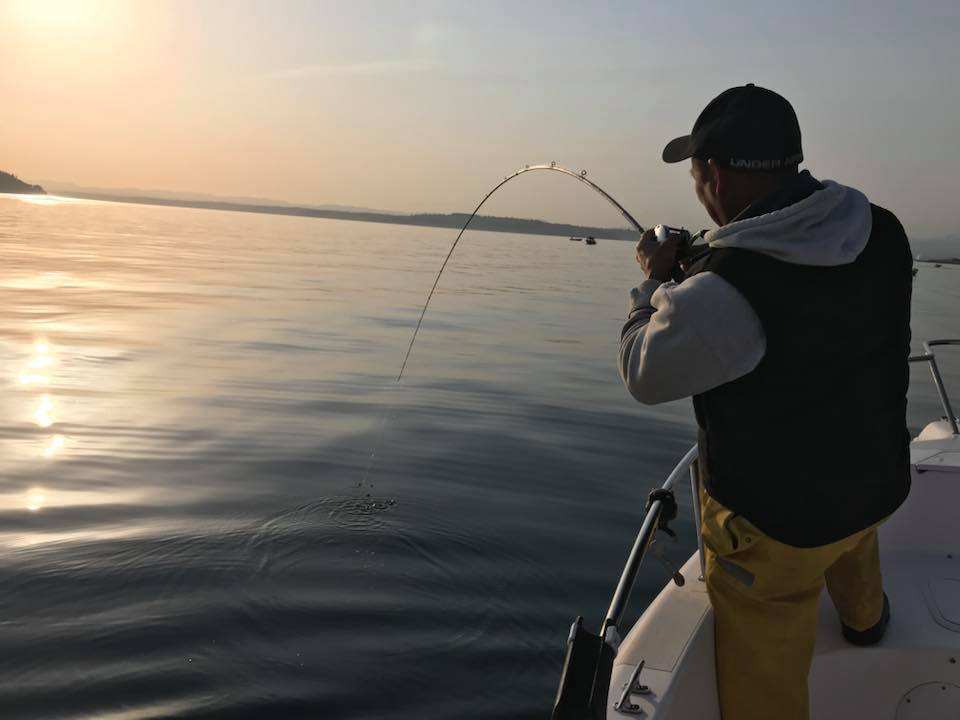
The Memorial Day weekend is often referred as the kickoff to summer fishing fun, and with all the opportunities blossoming in the days ahead, there’s no need to wait until summer solstice or the Fourth of July.
For salmon anglers, the excitement season begins today through Monday (May 28-31) when the Tulalip Bubble Fishery, located north of Everett, opens for kings. In recent years, the fishery has been a fair to good producer of early-summer kings in the 10- to 20-pound range.
Fishing at the bubble is allowed each week from 12:01 a.m. Fridays through 11:59 a.m. Mondays only through Sept. 7, and then weekends only from Sept. 11-26.

The majority of kings in the bubble fishery are found in suspended water of 90 to 120 feet deep, and the best period is the early-morning period. Most will troll but jigging gets their fair share of fish too.
The Skykomish River from mouth to the Wallace River mouth opens this Saturday (May 29) for hatchery kings. The Skagit River from Highway 530 Bridge at Rockport to Cascade River Road opens Tuesday (June 1) for hatchery kings.
The Cascade River also opens Tuesday (June 1) from mouth to the Rockport-Cascade Road Bridge for hatchery kings, and closed on Sundays and Mondays of each week.
In a few weeks, the coastal ports of Neah Bay, La Push, Westport and Ilwaco open June 19 for chinook fishing, and one can gauge prospects by looking at the on-going commercial troll fishery that opened on May 1.
“This last week was painfully slow for the commercial trollers,” said Wendy Beeghley, the Washington Department of Fish and Wildlife (WDFW) coastal salmon manager. “They’ve been getting a shot of fish here and there, and then the fish will suddenly disappear. This isn’t uncommon since the fish are constantly moving around.”
“Chinook catches have been below average over years past, which is kind of a surprise to me,” Beeghley said. “I thought we’d have a little better fishing judging by the improved forecast. One thing that could be affecting the fishery is the water temperatures are awfully cold. The best bite we’ve seen are up north and down off Westport, but we haven’t seen much off the Columbia mouth right now which is typical for this time of the year.”
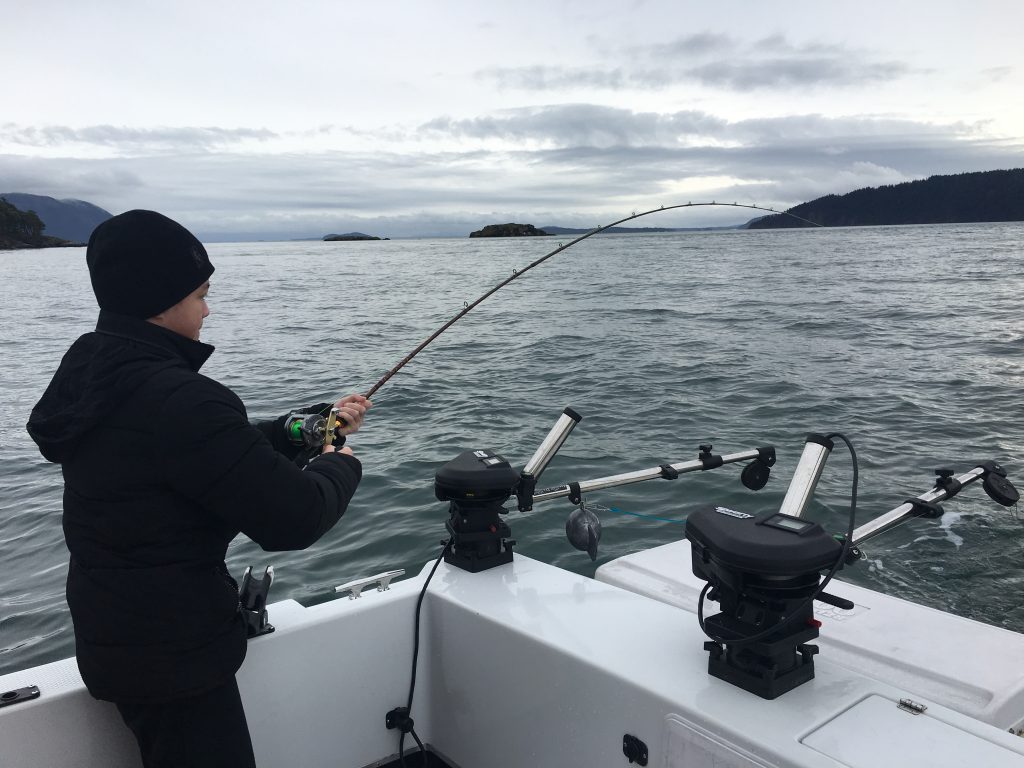
Neah Bay and La Pushare open daily from June 19 to July 3, and Westport and Ilwaco are open daily from June 19-26 for a fishery directed at chinook. Beginning June 27 through Sept. 15, Ilwaco is open daily and Westport is open Sundays through Thursdays for chinook and hatchery coho. Then from July 4 through Sept. 15, Neah Bay and La Push are open daily for chinook and hatchery coho.
Two other Puget Sound salmon fisheries opening June 16 is south-central Puget Sound for hatchery chinook and central Puget Sound for resident coho.
If you’ve got ants in your pants, then you can also wet a line right now for hatchery chinook in southern Puget Sound south of the Narrows Bridge. Hit Point Fosdick and off Fox Island’s east side at Gibson Point, Toy Point and Fox Point.
Columbia River shad watch underway
All eyes are glued to the Lower Columbia River shad return as the front end of the train has already entered the Big-C, and look for it to gain steam heading into the weeks ahead.
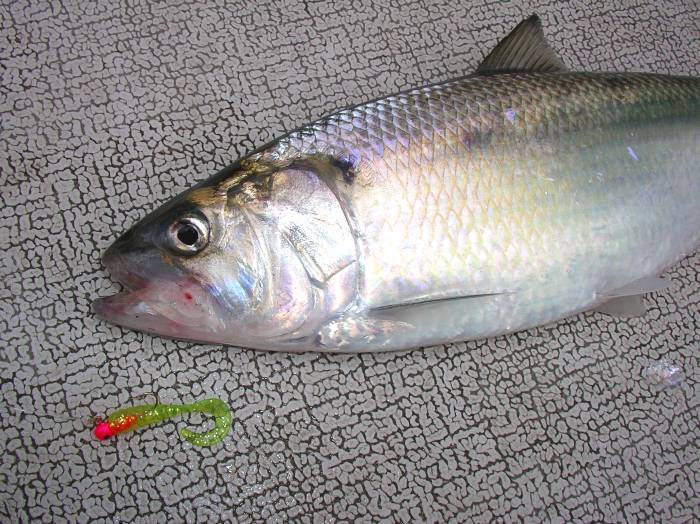
From May 19-24, the single-day fish count at Bonneville hovered from a high of 1,540 shad to a low of 955, but on Tuesday (May 26) it ramped up to 3,434; Wednesday (May 26), 4,688; and Thursday (May 27), 5,585 for a season total of 32,158.
The 10-year average peak timing for shad usually occurs from early- to mid-June, but anglers should make plans on going once the daily shad counts hit 20,000-plus.
The shad return of nearly 6.0-million fish in 2020 was the fourth largest on record since 1980 and followed a record high return of 7.4-million in 2019. The shad run size includes escapement of 5.8 million fish upstream of Bonneville Dam, but doesn’t account for unknown numbers of shad spawning downstream of Bonneville Dam and Willamette Falls.
Since the late 1970s, runs have met or exceeded 1.0-million fish per year and through the 2000s, the 10-year average run size increased by around a million fish each successive decade with a peak of over 6.0-million fish in 2005. From 2010-2019, runs ranged from just over a million in 2011 to a new peak of over seven million in 2019.
The Lower Columbia and Lower Willamette combined sport catch was 168,700 shad (2.8-percent of the total run), and there were no mainstem non-treaty commercial landings in 2020. Harvest was below the recent five-year average (recreational and commercial combined) of 179,500 fish.
The lower-than-expected sport catch in the Lower Columbia likely stemmed from COVID-19 related closures of U.S. Army Corp of Engineers recreation areas at their Bonneville Lock and Dam site where a majority of the Oregon bank angling and catch occurs on the Columbia.
Shad are a migratory fish that spend three to four years in the ocean before returning to spawn in tributaries clear into the Upper Columbia River and into Hells Canyon of the Snake River.

Some of the best fishing occurs along the shoreline just below Bonneville Dam, but shad are spread out in the Camas Slough, and from Washougal downstream to Kalama. The most popular fishing location is just below Bonneville Dam by heading east on Highway 14 about two miles past the town of North Bonneville, and take the right-hand turn by transmission towers. The access road allows anglers about three miles of prime shoreline in either direction.
Shad tend to like a fast-running current, and most fish usually are caught no further than 30 feet from shore. Shad darts are the most effective lure, but red and white colored flies with a small hook, colored beads like red or metallic silver or gold, small crappie-like jigs along with small wobbler spoons will catch their fair share of shad.
Spot shrimp fishery update
The much-anticipated spot shrimp season opened in some places of Puget Sound on May 19, and catches were excellent overall and angler effort was high with WDFW announcing additional fishing on June 2 (9 a.m. to 1 p.m.) in Areas 9, 8-1, 8-2 and 11 (northern Puget Sound, eastside of Whidbey Island and south-central Puget Sound).
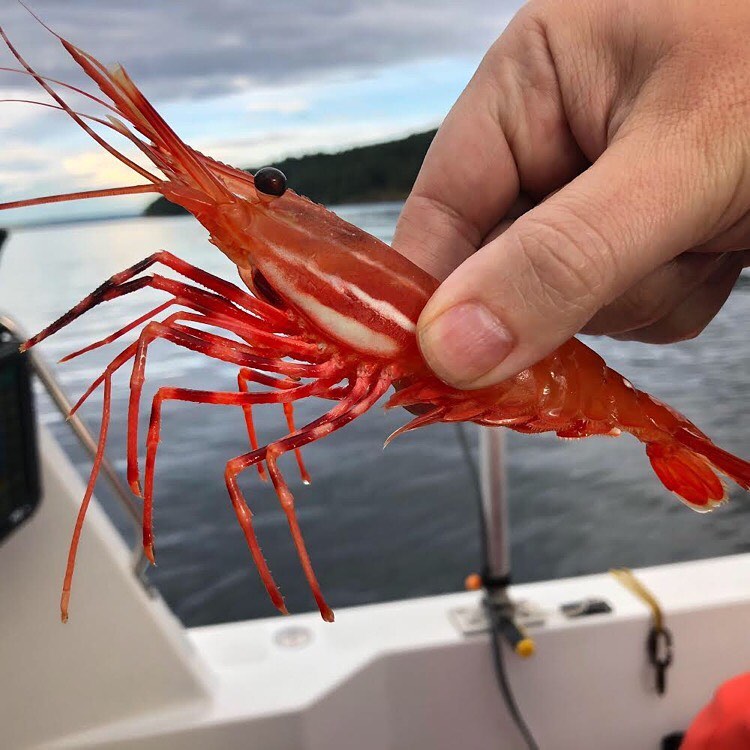
High effort and very good fishing in places like Elliott Bay and outside in central Puget Sound (Area 10) means both are done for the season.
The opening day on Hood Canal went very well, and there was an uptick on catches and effort by Saturday (May 22).
“Just based on what I saw at the Misery Point ramp (near Seabeck in Hood Canal) both the paved and dirt parking lots were packed, and the roads leading into the area were also filled with trucks and trailers,” said Don Velasquez, a WDFW Puget Sound shellfish manager. “I passed by the Salisbury ramp and it looked similar with vehicles parked out onto Highway 104.”
In the eastern Strait of Juan de Fuca and San Juan Islands, effort and catches were also very good for spot shrimp. In south-central Puget Sound there was high effort and in general the catch seemed good although the waters closer to Tacoma were spottier and as you went north places like Point Beals and Dolphin Point were much better.
The San Juan Islands (7 East and 7 West) are open June 2-5 and June 16-19. If enough quota remains then it would reopen on July 15-17 and possibly July 29-31. The coonstripe shrimp fishery in 7 East will likely begin sometime after the spot shrimp season ends with depth restrictions.
The San Juan Islands (7 South) are open June 2-5 only. No additional openings thereafter are likely.
In Hood Canal (12) spot shrimp fishing will reopen June 2, June 5 and June 16 from 9 a.m. to 1 p.m. each day. If enough quota remains then it would reopen on June 19 and possibly June 30 from 9 a.m. to 1 p.m. each day.
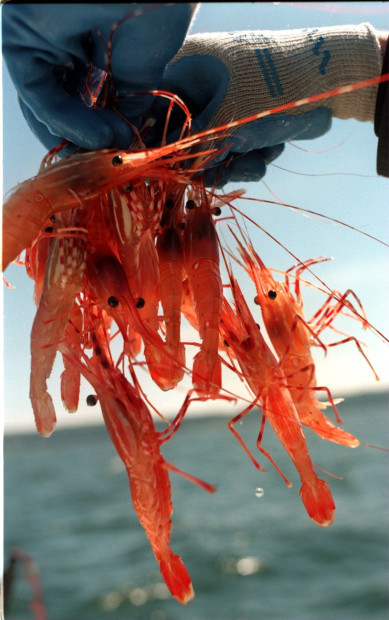
The western Strait of Juan de Fuca in Sekiu (Marine Area 5)is open daily and ends once the quota is attained or Sept 15 whichever comes first.
The eastern Strait of Juan de Fuca (Marine Area 6) outside of Discovery Bay reopens June 2-5 and June 16-19. If enough quota remains then it would reopen on July 15-17 and possibly July 29-31. The coonstripe shrimp fishery will likely begin sometime after the spot shrimp season ends with depth restrictions.
Beginning June 1 in Puget Sound, the daily limit for shrimp is 10 pounds of all shrimp types, with a maximum of 80 spot shrimp if an area is open to spot shrimp harvest. Only pots with a minimum 1-inch mesh are allowed when retaining spot shrimp. In areas where additional spot shrimp fishing is allowed, pots may only be set or pulled between 9 a.m. and 1 p.m.
In other marine areas without designated hours, WDFW managers remind shrimpers that traps can be set one hour before official sunrise during any open period. The pots must be removed from the water in these same areas by one hour after sunset at the end of an open period.
Southern Puget Sound (13) is closed due to poor spot shrimp abundance levels, but opens daily beginning June 1 to Oct. 15 for coonstripe shrimp with depth restrictions.
For specific season dates, hours of day fishing are allowed, what other shrimp species can be harvested, daily catch limits and rules on mesh size for pots used, consult the WDFW website at https://wdfw.wa.gov/.
Other notable options
–The final coastal spring razor clam digs at Mocrocks Beach only are happening today and Sunday (May 28 and 30).
“Digging has been very good, and limits were the rule for everyone (the first 15 clams dug per person is a daily limit regardless of size or condition),” said Dan Ayres, the head WDFW coastal shellfish manager. “The crowds were large, but we had no big back ups on the roads leading into the areas open for digging.”
On Wednesday (May 26), 2,185 diggers took home 32,776 clams for 15 clams per person (the first 15 clams dug is a daily limit regardless of size or condition); Monday (May 24), 455 had 6,825 for 15.0; Saturday (May 15), 7,507 had 112,600 for 15.0; and Monday (May 17), 4,661 had 69,921 15.0.
Upcoming morning only digging dates are May 28, -2.5 at 8:46 a.m.; and May 30, -1.6 at 10:28 a.m. These will likely be the final digs of the spring season.
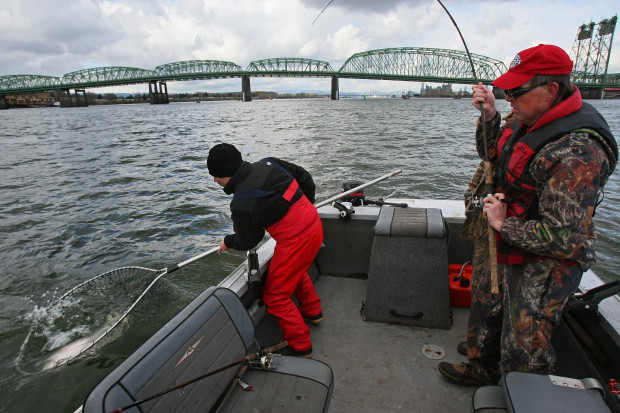
–The Columbia River hatchery spring chinook fishery from Tongue Point/Rocky Point line up to the Bonneville Dam deadline (boat and bank) reopens this Saturday (May 29) only. There are some sections of the lower mainstem closed to fishing.
The fishery below Bonneville Dam was initially open through April 4 with 2,943 adult spring chinook kept (329 released) from 43,934 angler trips. It reopened May 21-23 with an additional 472 adult spring chinook kept (177 released) which was 94% of the expected handle. To date, the below Bonneville area has accrued 2,502 out of an allowed 4,692 upriver mortalities (53%).
Fishing from Bonneville up to the OR/WA border will reopen June 5-6 for hatchery spring chinook.
The fishery above Bonneville was open March 16 to May 5 with 532 adult spring chinook kept (253 released) from 2,745 angler trips. It reopened May 22-23 and is scheduled to be open again this coming weekend (May 29-30). Catches this past weekend were about two-thirds of expectations with 74 adult spring chinook kept (39 released) from 712 angler trips. To date, this fishery has accrued 635 out of an allowed 838 upriver mortalities (76%).
The daily limit is two adult hatchery salmonids (chinook or steelhead), but only one may be a chinook and only one may be a steelhead.
–The plug will be pulled in Puget Sound with some extreme low tides happening now through Monday allowing shellfish gatherers to comb beaches for clams, mussels, oysters and geoduck.
Public access on many beaches is relatively easy, but be sure to check the WDFW and Department of Health websites for any closures or changes. A list of beaches can be found at https://wdfw.wa.gov/sites/default/files/2021-03/adopted_2021wdfwbeachseasonsbarchart.pdf.
For emergency beach closures, call the marine biotoxin hotline at 800-562-5632 or visit the DOH website at www.doh.wa.gov. Also check the WDFW hotline at 866-880-5431 and website at http://wdfw.wa.gov.
Also keep in mind that all eastern mainland beaches from Everett south into southern Puget Sound are also closed for shellfish due to unsafe pollution levels.
Upcoming low tides: May 28, -3.8 at 12:50 p.m.; May 29, -3.3 at 1:38 p.m.; May 30, -2.4 at 2:29 p.m.; May 31, -1.3 at 3:22 p.m.; June 9, -1.4 feet at 11:01 a.m.; June 10, -1.7 at 11:32 a.m.; June 11, -1.9 at 12:06 p.m.; June 12, -2.0 at 12:43 p.m.; June 13, -1.9 at 1:22 p.m.; June 14, -1.6 at 2:04 p.m.; June 15, -1.1 at 2:48 p.m.; June 22, -2.1 at 9:29 a.m.; June 23, -3.1 at 10:14 a.m.; June 24, -3.8 at 11 a.m.; June 25, -3.9 at 11:46 a.m.; June 26, -3.6 at 12:33 p.m.; June 27, -2.9 at 1:21 p.m.; and June 28, -2.0 at 2:08 p.m.

